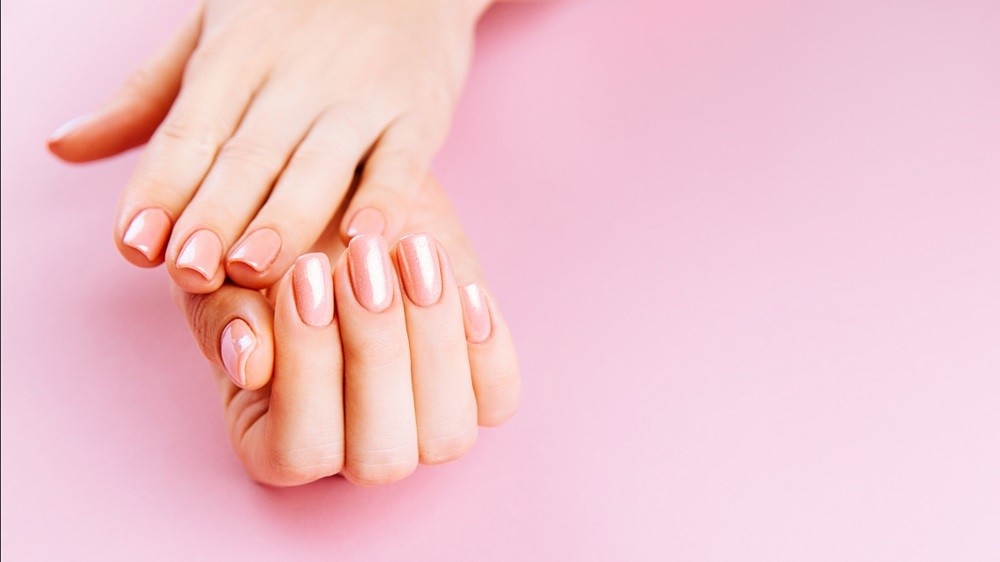Contents
- Why do some people have white spots on their nails?
- Fungi
- Antibody reaction
- Lack of minerals
- Cracked or broken nails
- When should white spots on nails cause concern?
- Remove the white spot from your nails!
- What causes fingernails to peel?
- Why your nails are peeling
- What’s causing my brittle nails?
- How can you prevent nail breakage?
- Nail fragility: the root causes

Why do some people have white spots on their nails?
White spots on what would otherwise be a pink fingernail are cause for concern because of the association between nail health and nail color. Leukonychia is another name for the white staining of the nail. While white spots are typically harmless, they can sometimes be indicative of more serious health issues.
Nails frequently show white patches. Some medical conditions might trigger them. A lack of a mineral, a nail damage, a fungal infection, or an allergic reaction are all plausible explanations. Please visit Maby blog to update the latest nail news.
Fungi
Toenail fungus, or onychomycosis, is the most common type of nail fungus. Tiny white spots on fingernails could be the first sign of an infection. The nail bed is a potential site of infection dissemination and growth. It’s possible that the toenails will develop a flaky, brittle, and thick appearance.
Antibody reaction
An sensitivity to the chemicals in nail strengthener, gloss, polish, or removers. Nails become discolored and white due to this. You can also damage your nails and get white spots from using gel or acrylic nails.
Lack of minerals
If you’re low in certain vitamins or minerals, you might see white spots along your fingernails. Calcium and zinc deficiencies have been connected to this issue.
Cracked or broken nails
Injuries to the nail bed can cause the nail to develop with white spots or dots. However, you may not remember getting hurt until your nails have fully grown out. Some injuries, though, won’t become apparent for up to four weeks.
Nail injuries are typically caused by accidental contact with a hard surface, such as a desk or counter, a hammer, or a door.
Additionally, nail damage can be caused by regular manicures, resulting in unsightly white spots. Manicurist pressure can potentially cause damage to the nail bed.
When should white spots on nails cause concern?
The severity of the problem can potentially be determined by counting the amount of white spots on the nails and how often they appear. If a single white spot appears on a nail, it is probably due to the trauma and is not cause for concern. The presence of white patches in the majority of your nails may be indicative of a skin condition.
When the fingernails of one or both hands turn white, it may be a sign of a disease affecting the kidneys or the liver. It’s smart to keep an eye on any nail color changes or concerns, and to consult a doctor if necessary.
Remove the white spot from your nails!
There are numerous approaches to eliminating white spots from fingernails. After the normal nail growth cycle of six to eight months, white spots caused by an injury will fade away. In order to come up with an effective treatment plan for skin-related disorders, nutritional deficiencies, or systemic diseases, a correct diagnosis is required.
There is no quick solution for white spots on fingernails, but preventing them by avoiding injuries or being health conscious will help. In addition, please refer to: Remove ridges from your nails with these tried and true methods.
What causes fingernails to peel?
Fingernails can develop horizontal cracks, which cause the outer layers to peel off. This is known medically as onychoschizia, and it’s just one of several causes of fingernail peeling.
Keratin, the main component of nails, can also be found in hair and skin. Keratin makes nails more durable, but damage from the outside or an underlying medical issue might still cause the outer layers to peel off. After this happens, you may notice that your nails look and feel thinner and more sensitive than usual.
Why your nails are peeling
Fingernails often peel because of a minor iron shortage. However, this symptom can be brought on by a number of different external factors and underlying health conditions. Some possible external factors are:
- Time spent in hot, sticky climates
- Putting chemicals in contact with nails
- Over-polishing one’s nails
- Picking things up or prying them open with nails
- Nails done up in artificial materials like acrylic or gel
- Instead than using remover, you peel off your nail polish.
- Doing the dishes barehanded
- Excessive hand-washing
Nails can be slow to grow, so the outward signs of damage may not appear for weeks or months. Dehydration, iron deficiency anemia, underactive thyroid, lung disease, kidney disease, and so on can all contribute to the brittleness and peeling of the nails. As you become older, you may notice a difference in the way your fingernails develop. Age-related alterations in fingernails may result from poor blood circulation and prolonged exposure to UV rays, according to studies.
Nail peeling is more often caused by mild iron shortage than by serious underlying health issues. However, it is helpful for everyone to know that there are a few potential causes of peeling nails. You should tell your doctor if you experience any other symptoms besides peeling nails.
Anemia is another sign of the disorders that can cause nail discoloration, peeling, or brittleness. Mild iron deficiency can progress to severe anemia if not treated. When there are not enough red blood cells in the body, anemia sets in. Hemoglobin is a component of red blood cells that aids in the transportation of oxygen throughout the body.
Fingernail breakage and peeling could be the result of a fungal infection. Psoriasis and other nail and skin disorders are common causes of brittle nails. A general medical issue, such as diabetes or thyroid illness, may manifest itself externally in the form of brittle nails.
If your diet is lacking in protein or certain vitamins or minerals, you may develop a deficiency, which can lead to nail fragility. Healthy fingernails are a sign that you are getting enough of the vitamin biotin. If you have any of these symptoms or are concerned that your diet isn’t providing enough of a certain nutrient, it’s important to see a doctor.
What’s causing my brittle nails?
In the same way that your skin may provide some insight into your health, your nails may do the same. The most common causes of brittle nails are dehydration and the natural aging process, however thyroid disorders like hypothyroidism and hyperthyroidism may also manifest themselves in the form of nail problems.
The hands and nails are two of the first places to reveal your age. When you examine the nails of infants and young children, you will notice how smooth and vibrant they are. The condition of your nails may change as you get older, but it is still possible to enhance them. However, before moving forward, there is the issue of brittle nails to consider.
How can you prevent nail breakage?
Keratin is the protein that makes up the layers of your fingernails and toenails. Nails in good health are thick and glossy, without any patches or discolouration. Even the healthiest nails might become brittle from time to time. Although brittle fingernails get more attention than brittle toenails, brittleness can affect either.
Estimates place the prevalence of brittle nails somewhere in the middle. Indeed, brittle nails are a common problem. Nails on women are more fragile than those on males. Nails that are brittle are readily damaged by splitting, peeling, or breaking.
Nail fragility: the root causes
Aging, prolonged or repeated contact to chemicals and water, use of a nail polish remover, and extended usage of nail polishes are all potential causes of brittle nails. All of these potential causes can easily occur simultaneously in some cases.
Nail psoriasis, lichen planus, hyperthyroidism, hypothyroidism, and fungal nail infections are some possible causes of crumbly or brittle nails. Hair loss and brittle nails are common symptoms of thyroid illness. Hypothyroidism is a known cause of brittle nails and is more common in women than males.
Hypothyroidism, in which the thyroid does not produce enough hormones, can cause the metabolism to slow down. According to a health article, your body will sweat less if your metabolism slows down. Dry skin and brittle nails can develop if the body doesn’t produce enough perspiration, which is a natural moisturizer.
You may attribute your brittle fingernails to a lack of a certain vitamin, which may or may not be the case. It depends on a person’s overall health, so it’s possible. Experts say that lack of vitamins or internal disorders are to blame for brittle nails.
The most common vitamin shortage that causes brittle nails is iron insufficiency. Nails tend to become brittle and break easily in those with iron deficiency or anemia. You should also realize that brittle nails are more likely to be caused by an external reason if your fingernails are weak but your toenails are absolutely strong and healthy.
